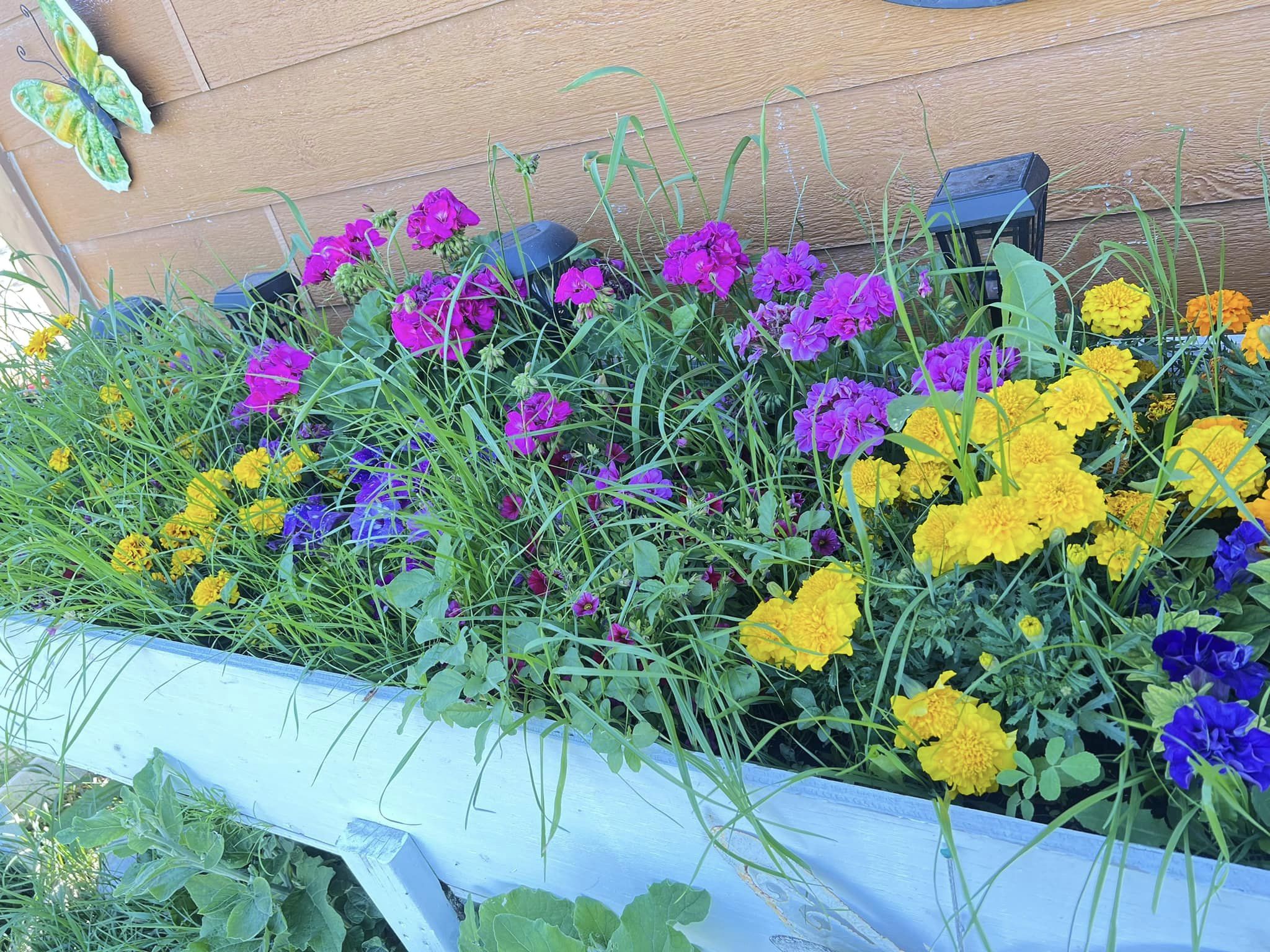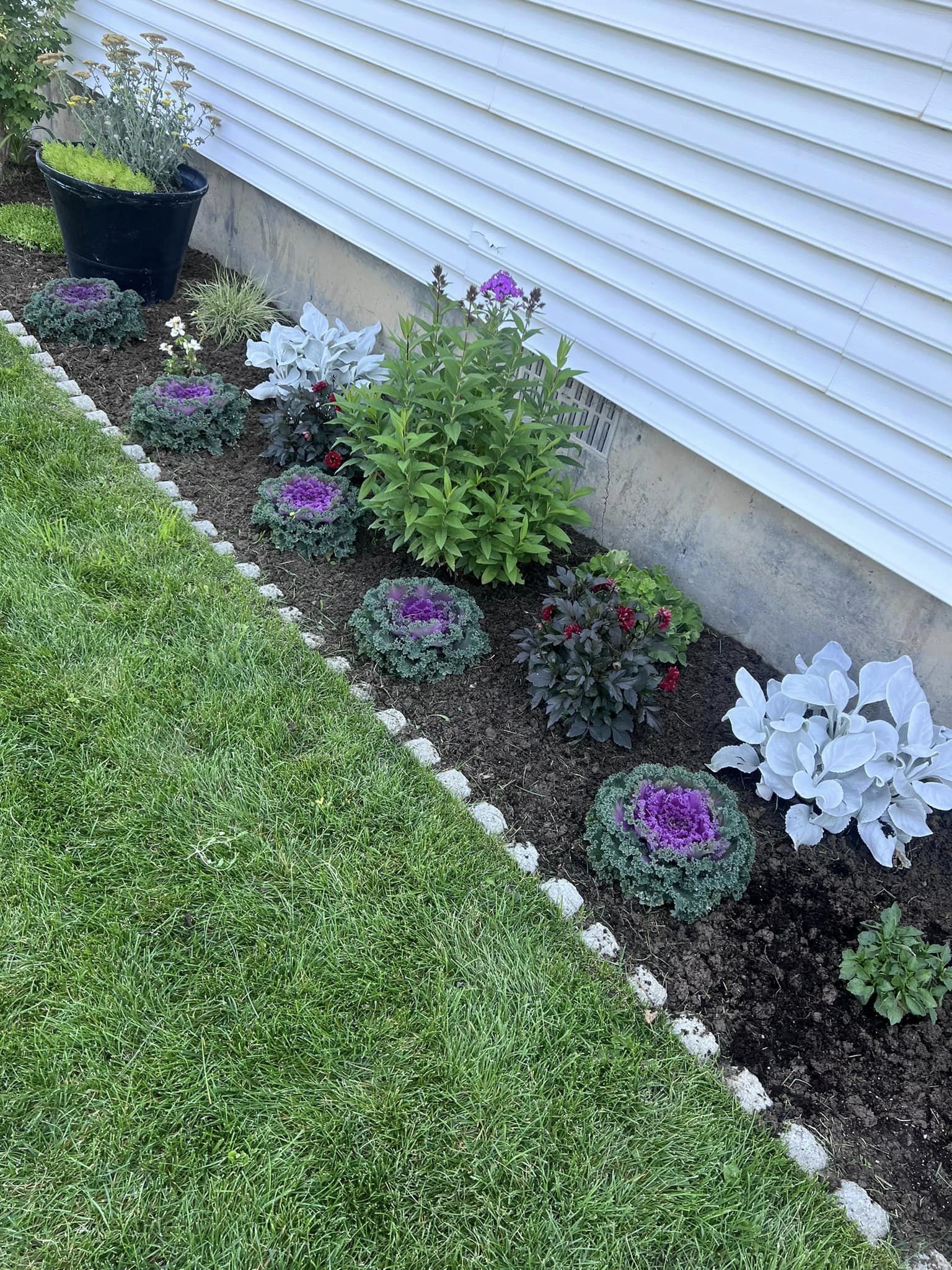Grass, though often desirable in lawns, looks unsightly in a flower bed. Grass can quickly take over your flower beds, competing with your flowers for nutrients, water, and sunlight. Getting rid of these unwanted guests is a priority, but you must do so without killing your desirable plants unless you want to start afresh.
The question is, how do you kill grass in flower beds naturally without killing plants? There are several natural methods you can employ to make this happen.
Discover these approaches in this guide.
How To Kill Grass In Flower Beds Without Killing Plants Naturally
1. Pull Out The Grass By Hand
Your hands are excellent tools for killing grass in your flower beds, especially when dealing with young grasses or tiny patches of grass. Invest in gardening gloves to protect your hands from blisters and cuts, a hand trowel to loosen the soil and uproot the grass, and a kneeling pad to protect your knees.
Moist soil makes pulling out grass easier, so do so after rain or lightly water the area beforehand. Pull the grass slowly, gently wiggling it out to get the soil loose. Dig out tougher grass around the base with a hand trowel and pry it.
A garden fork will be helpful when dealing with a large patch of grass. Place the grass you’ve pulled in a garden waste bag or compost bin to prevent regrowth.
Related Posts:
2. Burn The Grass With A Flame Gun
Consider killing the grass in your flower beds with a flame gun if you are comfortable using it. You must be careful with this approach to ensure you don’t accidentally kill your plants. Before bringing out a flame gun, remove flammable materials like dry leaves and sticks.
In addition, lightly water your flower bed (apart from the grass you intend to burn) to create a moisture barrier that will protect desirable plants from catching fire. Position the flame around 2-3 inches above the grass and steadily and slowly move it over it.
You don’t need to set the grass on fire; just expose it with enough heat to wilt and scorch it. Use a flame gun only during calm days (avoid windy days), and keep a garden hose, fire extinguisher, or a bucket of water nearby.
3. Boiling Water
This environmentally friendly approach scolds the grass, making it wither and die. Use boiling water to kill isolated patches of grass in your flower beds or those growing in small areas. Since boiling water can harm plants indiscriminately, focus the treatment only on the areas with grass.
Shield the plants growing close to the grass from the boiling water with plastic sheets or cardboard. Pour the water on the grass, targeting the roots. A watering can with a spout provides more precision.
The grass blades and roots will die off in a few hours or days. Remove the dead grass by hand or with a rake and monitor the treated area for signs of regrowth.
4. Vinegar Solution
Vinegar is an eco-friendly, safe alternative to chemical herbicides. However, apply it carefully to avoid harming nearby plants. You may need to use vinegar multiple times to kill perennial grasses or those with deep roots.
You can add dish soap and salt to increase the solution’s potency. Mix a gallon of white vinegar, a tablespoon of dish soap, and some salt, and carefully spray it directly on the grass you want to kill. Observe the grass for several days, reapplying vinegar to the areas where the grasses do not wilt and die.
Once the grasses die, remove the dead blades and roots by hand or with a rake.
5. Corn Gluten Meal
Corn gluten meal won’t kill existing weeds but help prevent them from germinating. Besides keeping grasses from invading your flower beds, corn gluten meal will supply nitrogen to your plants, promoting healthy plants.
Apply corn gluten meal before grass and weed seeds germinate. Do this in early to mid-spring to prevent cool-season grasses and early summer or late spring for warm-season grasses.
Spread corn gluten meal evenly across your flower bed and lightly water the area. Corn gluten meal will stay effective for around 5-6 weeks.
Note
Don’t use too much corn gluten meal in your flower beds, as this can cause excessive nitrogen levels.
6. Solarization
Harness the sun’s energy to kill the grass in your flower beds. This technique entails covering the ground with a clear plastic sheet that lets sunlight inside, warms the soil, and traps heat, creating a greenhouse effect. The heat buildup kills the roots and the seeds of the grass.
Use a plastic sheet with about 1-6 mils in thickness. Excellent choices include greenhouse plastic and heavy-duty painter’s plastic.
Below is a step-by-step guide to solarizing the grasses in your flower beds.
- Remove debris, grasses, and weeds with a garden fork, hoe, or hand.
- Loosen the top soil layer with a rake or garden fork to aid heat penetration and facilitate better contact between the plastic and soil.
- Level the soil with a rake, making it smooth and free of rocks and large soil clumps.
- Lightly water the soil because moist soil conducts heat better.
- Cut the plastic sheet to a size that will fit the area you intend to solarize. Cut the sheet a few inches too big on the sides to secure it to the ground.
- Cover the area with the sheet, ensuring it fully touches the soil.
- Weigh down the edges with stakes, rocks, or soil.
- Leave the plastic in place for 3-8 weeks. Solarization is more effective when it is warm and extended periods of sunlight. Check on the area occasionally to ensure the sheet stays intact and secure at all times.
- You should see a significant reduction in grass and weeds when you remove the plastic sheet. The soil may also appear compacted and dark.
- Break up any crusts that may have formed, and then add compost to the area.
Note
Solarization may prove challenging if you don’t intend to kill the plants in your flower beds. However, you can avoid this and still solarize the grass by selectively solarizing small sections at a time. Considering the potential effects of solarization on your plants, I recommend trying the other approaches first.
Precautions You Should Observe When Killing Grasses in Your Flower Beds
Observe the following to ensure you successfully kill grasses without harming the plants.
- Choose the best application time to achieve the desired results. For example, apply pre-emergent methods like corn gluten meal before the seeds germinate and post-emergent solutions during the grasses’ active growing times.
- Protect nearby desirable plants from getting harmed by the treatments by shielding them with cardboard, plastic sheeting, or mulch.
- Do not shade your flower beds for extended periods because it can affect the health of the plants.
- Once the grasses die, continue monitoring your plants’ health.
- Allow sufficient time to pass before replanting in treated areas. This will ensure any residual effects of the treatment diminish.
How To Prevent Grasses From Growing In Your Flower Beds
Below are effective ways to keep grasses out of your flower beds.
- Apply 3-4 inches thick of organic mulch to block sunlight, thus making it hard for grass to grow.
- Reinforce the edges of your flower beds with barriers like plastic or metal to prevent grass from creeping in from the sides.
- Inspect your flower beds regularly for emerging grass or weeds and remove them promptly.
- Plant your flowers closer together to make them tightly packed and create a shaded area that is less conducive for grass. However, ensure your plants have enough space.
- Cultivate your flower beds regularly to disrupt the grass seeds and roots.
Why Is Killing Grasses In Flower Beds Important?
Killing grasses that have infringed on your flower beds is essential for the following reasons:
- Grass competes with flowers and water.
- Grass can overshadow smaller flowers, blocking them from getting sunlight.
- Kill grasses for visually appealing, tidy flower beds. Grasses can make your flower beds unkempt and interfere with the color scheme and design.
- It helps keep out diseases and pests that grasses harbor.
Summary
Grasses do not belong in your flower beds; they look better on the lawn. You can tackle the grasses in your flower beds without destroying your desirable plants, and you don’t even have to use chemicals. Grasses spread into flower beds through seed dispersal, rhizome and stolon growth, soil disturbance, and improper edging.

Hey there, I’m Derek Schew, a writer for Lawnholic.com, where we cover everything and anything related to lawns. As someone who’s spent countless hours tending to my own lawn, I’m passionate about sharing my knowledge and helping others achieve the perfect yard. From lawn care tips to product reviews, I’m committed to providing our readers with the most accurate and up-to-date information available. So whether you’re a seasoned lawn enthusiast or just getting started, I invite you to join our community and discover the joys of a lush, green lawn.



